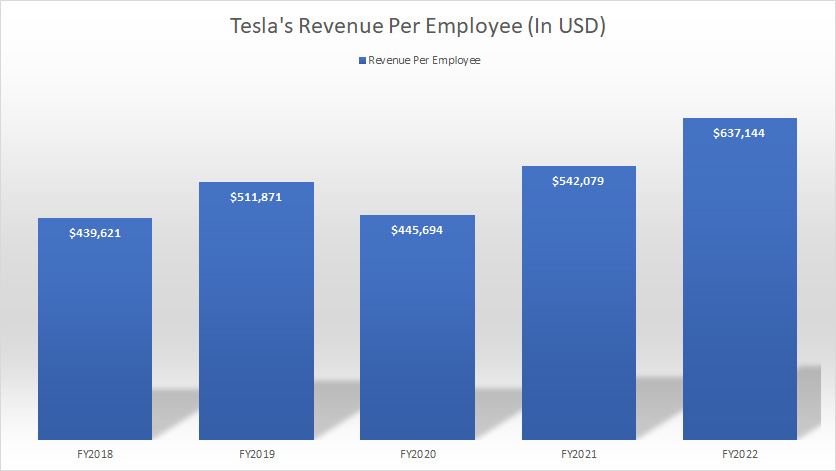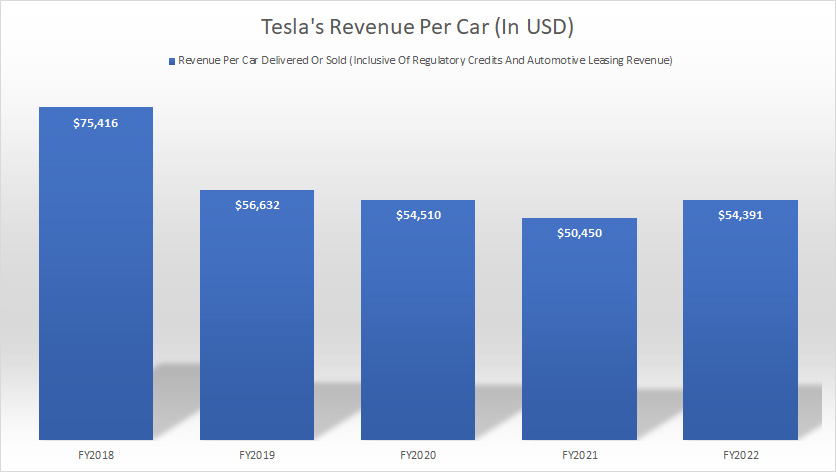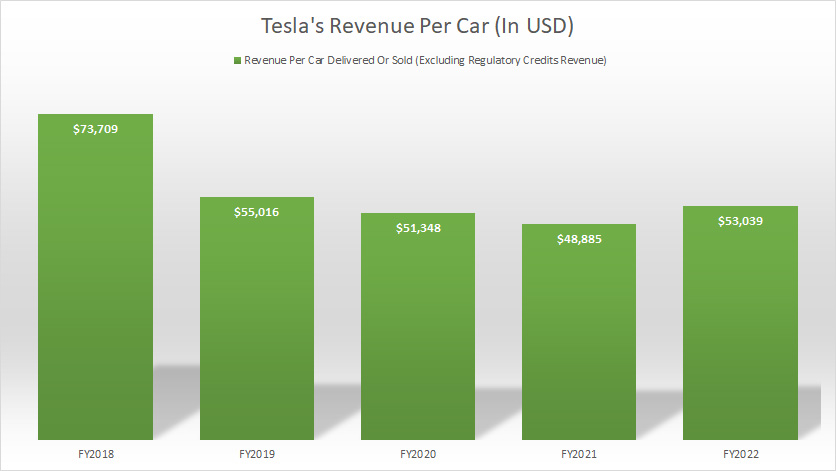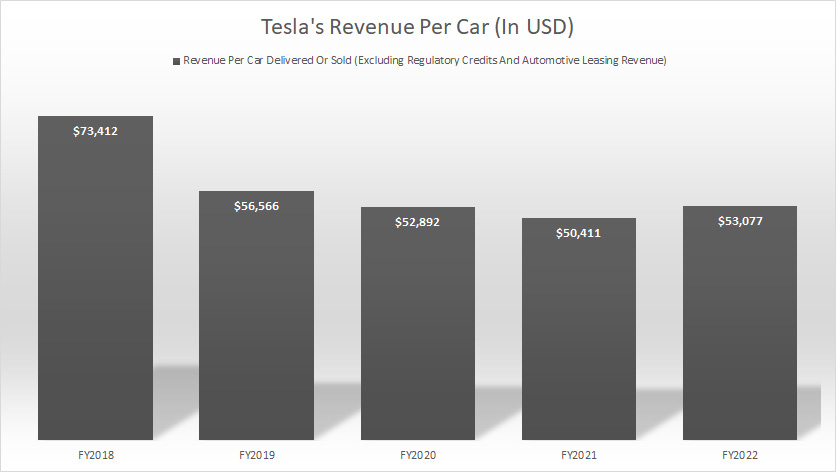
Electric vehicle charging. Pixabay Image
This article covers the revenue per employee and revenue per car or vehicle metrics of Tesla, Inc., (NASDAQ: TSLA).
Table Of Contents
Per Employee Results
Per Car Or Vehicle Results
B1. Revenue Per Car (1)
(Include Regulatory Credits And Automotive Leasing)
B2. Revenue Per Car (2)
(Exclude Regulatory Credits)
B3. Revenue Per Car (3)
(Exclude Regulatory Credits And Automotive Leasing)
Conclusion And Reference
S1. Conclusion
S2. References and Credits
S3. Disclosure
Revenue Per Employee
Tesla-revenue-per-employee
(click image to expand)
Tesla’s revenue per employee is calculated as the total revenue divided by the total number of full-time employees worldwide at the end of the fiscal year.
Here is the formula:
Revenue Per Employee = Total Revenue / Total Number Of Full-Time Employees Worldwide
The total revenue in the above equation refers to the consolidated revenue earned from all segments, including the automotive, energy, and services.
At the end of fiscal 2022, Tesla’s revenue per employee is estimated at $637,000, a rise of 18% over 2021.
In other words, each employee generates roughly $637,000 in revenue per year for Tesla.
This figure has been on a steady rise and has risen by 45% since fiscal 2018.
On a side note, Tesla had close to 128,000 full-time employees globally at the end of fiscal 2022.
Revenue Per Car (1)
Tesla-revenue-per-car-1
(click image to expand)
Tesla’s revenue per car is calculated as automotive revenue divided by the total vehicle sold at the end of the fiscal year.
Here is the formula:
Revenue Per Car = Automotive Revenue / Total Vehicles Sold Worldwide
The automotive revenue in the above equation includes Tesla’s automotive sales revenue, automotive leasing revenue, and sales of regulatory credits.
The automotive revenue in this section includes all revenue and sales earned under the automotive segment which can range from new vehicle sales, vehicles under leases, parts, accessories, Supercharging, Full Self Driving, etc.
That said, Tesla made roughly $54,000 of revenue per vehicle sold at the end of fiscal 2022, up 8% over 2021 but in line with that of 2020.
This figure has been on a steady decline over the years and has declined by 28% since fiscal 2018.
Although the revenue per car has been on the decline over the long term, it rose abruptly in fiscal 2022, driven possibly by inflation caused by higher prices of raw materials and labor.
Revenue Per Car (2)
Tesla-revenue-per-car-2
(click image to expand)
The formula for revenue per vehicle in this section is:
Revenue Per Car = Automotive Revenue (Excluding Regulatory Credit Revenue) / Total Vehicles Sold Worldwide
The automotive revenue measured in this section excludes the sales of regulatory credits (carbon credits) as the revenue earned from regulatory credits may be considered as a by-product of the vehicle sales, as claimed by some parties.
That said, Tesla’s revenue per car measured in this section is slightly lower compared to the previous section but not much.
As seen, Tesla earned a revenue per car of $53,000 in fiscal 2022 after excluding regulatory credits, representing a rise of 8% over 2021 and 4% over 2020.
Similarly, Tesla’s revenue per car has been on the decline over the long term with or without regulatory credits revenue.
Therefore, Tesla’s regulatory credits revenue only helps the company earn a slightly higher revenue per vehicle delivered.
Revenue Per Car (3)
Tesla-revenue-per-car-3
(click image to expand)
The formula for revenue per vehicle in this section is:
Revenue Per Car = Automotive Revenue (Excluding Regulatory Credit And Automotive Leasing Revenue) / Vehicles Sold Worldwide Not Subject To Leasing
The automotive revenue measured in this section excludes the sales of regulatory credits (carbon credits) and automotive leasing.
In addition to the revenue part, the number of vehicles sold also is refined to only those not subject to leasing.
Despite having all the adjustments, Tesla’s revenue per car still came in at $53,000 in fiscal 2022, not much different from the previous calculation.
This figure also has been on a steady decline over the years but grew abruptly in fiscal 2022 by 6% year-over-year, possibly driven by inflation.
In short, the trend of Tesla’s revenue per car looks all the same even with some adjustments to the formula.
Summary
In conclusion, Tesla’s employees help the company make a hefty load of money, notably at more than $600,000 per year per employee.
Tesla’s revenue per car has come down quite significantly over the past 5 years and the downtrend will most likely continue in the foreseeable future.
References and Credits
1. All financial figures presented in this article were obtained and referenced from the company’s SEC filings, earnings releases, investors presentations, update letters, quarterly and annual reports, etc., which are available in Tesla Financial Results.
2. Featured images in this article are obtained free and are used without any attribution from Pixabay.
Disclosure
References and examples such as tables, charts, and diagrams are constantly reviewed to avoid errors, but we cannot warrant the full correctness of all content.
The content in this article is for informational purposes only and is neither a recommendation nor a piece of financial advice to purchase a stock.
If you find the information in this article helpful, please consider sharing it on social media and also provide a link back to this article from any website so that more articles like this one can be created in the future.
Thank you!















